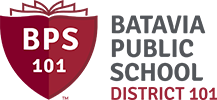4:070-AP2 Energy Management Conservation
4:070-AP2 Energy Management Conservation
The School District recognizes the importance of energy management and conservation. To ensure that every reasonable effort is made to conserve energy and natural resources while exercising sound financial management, the School District will conserve energy resources by implementing an energy management program. To ensure the overall success of the energy management program, the following specific areas of emphasis will be adopted:
- Batavia Public Schools will administer its energy conservation and management program primarily through the Energy Manager and Administrators.
- The Board expects all personnel at each campus to make a positive contribution to maximize energy conservation and produce energy savings.
Responsibilities:
- Every person is expected to be an “energy saver” as well as an “energy consumer.”
- The staff member is responsible for implementing the guidelines during the time that he/she is present in the classroom or office.
- Buildings & Grounds is responsible for control of common areas, i.e. halls, cafeteria, etc., building automation control systems.
- Everyone is responsible for verification of the nighttime shutdown.
- The building & district administrators are jointly responsible for the total energy usage in the district.
- The Energy Manager performs routine audits of all facilities and communicates the audit results to the appropriate personnel
- The Energy Manager is responsible for either directly or indirectly making adjustments to the District’s Energy Management System (EMS), including temperature settings and run times for Heating, Ventilation and Air Conditioning (HVAC) and other controlled equipment.
- The Energy Manager provides regular reports to building administrators and Buildings & Grounds indicating performance with regards to energy savings.
- The District is committed to and responsible for maintenance of the learning environment.
- To complement the District’s energy management program, the District shall develop and implement a preventive maintenance and monitoring plan for its facilities and systems, including HVAC, building envelope, and moisture management.
General:
- Classroom doors shall remain closed when HVAC is operating. Ensure doors between conditioned space and non-conditioned space remain closed at all times (i.e. between hallways and gym or pool area).
- Proper and thorough utilization of data loggers will be initiated and maintained to monitor relative humidity, temperature, and light levels throughout the organization’s buildings to ensure compliance with organization guidelines.
- All exhaust fans should be turned off daily.
- All office machines (copy machines, laminating equipment, etc.) shall be switched off each night and during unoccupied times. Fax machines should remain on. Copy machines which function also as network printers will be switched to power save mode.
- All computers should be turned off each night. This includes the monitor, local printer, and speakers. Network equipment is excluded. Network printers will be set to power save mode.
- All capable PC’s should be programmed for the “energy saver” mode using the power management feature. If network constraints restrict this for the PC, ensure the monitor “sleeps” after 10-minutes of inactivity.
Cooling Season Occupied Set Points1: 74°F – 78°F
Unoccupied Set Point: 85°F
Heating Season Occupied Set Points1: 68°F – 72°F
Unoccupied Set Point: 55°F
Air Conditioning Equipment
- Occupied temperature settings shall NOT be set below 74°F.
- During unoccupied times, the air conditioning equipment shall be off. The unoccupied period begins when the students leave the area at the end of day. It is anticipated that the temperature of the classroom will be maintained long enough to afford comfort for the period the staff remains in the classroom after the students have left.
- Air conditioning start times may be adjusted (depending on weather) to ensure classroom comfort when instruction begins.
- Ensure outside air dampers are closed during unoccupied times.
- Ceiling fans should be operated in all areas that have them.
- Relative humidity levels shall not exceed 60% for any 24 hour period.
- Air conditioning should not be utilized in facilities during the summer months unless the facilities are being used for summer school or year-round school. Air conditioning may be used by exception only or in those facilities that are involved in team-cleaning.
- In all areas which have evaporative coolers such as shops, kitchens and gymnasiums, the doors leading to halls which have air conditioned classrooms or dining areas should be kept closed as much as possible.
- During periods of mild weather, shut down HVAC equipment and adjust temperature with windows.
- Ensure dry food storage areas are maintained within code requirements. Typically, this is 55F-75F temperature and 35%-60% Relative Humidity. Utilize loggers to verify.
Heating Equipment
- Occupied temperature settings shall NOT be above 72°F.
- The unoccupied temperature setting shall be 55°F (i.e. setback). This may be adjusted to a 60°F setting during extreme weather.
- The unoccupied time shall begin when the students leave an area.
- During the spring and fall when there is no threat of freezing, all steam and forced air heating systems should be switched off during unoccupied times. Hot water heating systems should be switched off using the appropriate loop pumps.
- Ensure all domestic hot water systems are set no higher than 120°F or 140°F for cafeteria service (with dishwasher booster).
- Ensure all domestic hot water re-circulating pumps are switched off during unoccupied times.
- For heat pumps, ensure a 6 °F dead-band between heating and cooling modes.
- Heating oil and propane (if applicable) levels should be physically measured and recorded by “sticking the tanks” at least on the following intervals: 1) recurring scheduled monthly date 2) immediately before new delivery, 3) immediately after delivery.
Lighting
- All unnecessary lighting in unoccupied areas will be turned off. Staff should make certain that lights are turned off when leaving the classroom or office when empty. Utilize natural lighting where appropriate.
- All outside lighting shall be off during daylight hours.
- Gym lights should not be left on unless the gym is being utilized.
- All lights will be turned off when students and staff leave for the day. Custodians will turn on lights only in the areas in which they are working.
- Refrain from turning lights on unless definitely needed. Remember that lights not only consume electricity, but also give off heat that places an additional load on the air conditioning equipment and thereby increases the use of electricity necessary to cool the room.
Water
- Ensure all plumbing and/or intrusion (i.e. roof) leaks are reported and repaired immediately.
- Grounds watering should only be done between 4am-10am. Do not water during the heat of the day, typically between 10am – 8pm.
- When spray irrigating, ensure the water does not directly hit the building.
- Consider installing water sub-meters on irrigation and cooling tower supply lines to eliminate sewer charges.
Date Adopted: December 16, 2009
Date Amended: April 22, 2015



